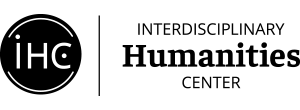30 Sep Reenactments: Talk, Body, and Gaze
Ryoko Suzuki (Economics, Keio University)
Sandra A. Thompson ( Linguistics, UCSB)
Friday, September 30 / 2:30 PM
1205 Education
In a reenactment, a speaker re-presents or depicts a previously occurring event, often dramatically. Our work is inspired by Goodwin (2007) and Sidnell (2006). Sidnell’s discussion focuses particularly on a recurrent pattern wherein reenacting speakers remove their gaze from their recipients during the reenactment, but return to gazing at their recipients as they resume the non-reenactment portion of their telling. He suggests that this pattern of gaze direction plays a role in enabling recipients to segment a telling into reenacting and narrating portions.
We examine gaze, gesture, and prosody in conversations from Japanese and English. In addition to the pattern Sidnell describes, we find a number of instances in which gaze is aimed directly at recipients during reenactments. Following Goodwin (2007) in viewing a reenacted story as “a multi-modal, multi-party field of activity”, we suggest that the gaze direction of tellers doing reenactments, as well as their prosody and visible behavior, can be understood in terms of a more inclusive generalization, namely that the coordinating of these resources depends heavily on:
a) the event being enacted
b) the habitat of that event
c) the habitat of the reenacting event
Goodwin, Charles. 2007. Interactive footing. In Elizabeth Holt and Rebecca Clift, eds., Reporting talk, 16-46. Cambridge: Cambridge University Press.
Sidnell, Jack. 2006. Coordinating gesture, gaze and talk in re-enactments. Research on Language and Social Interaction, 39.4: 377-409.
Sponsored by the IHC’s LISO RFG.

